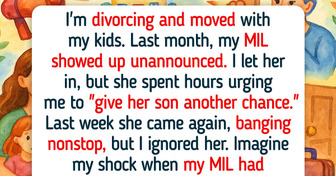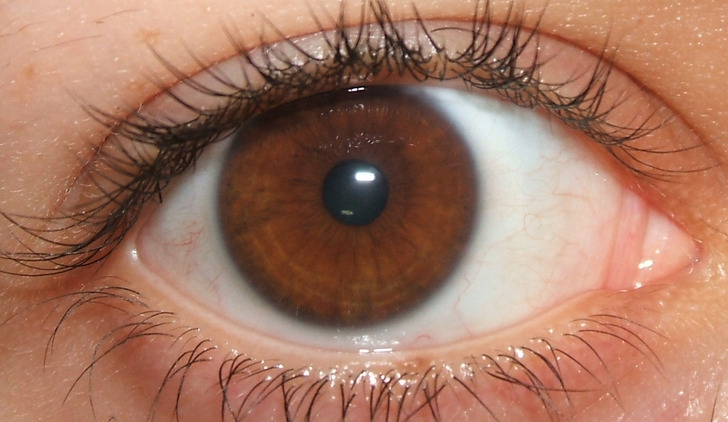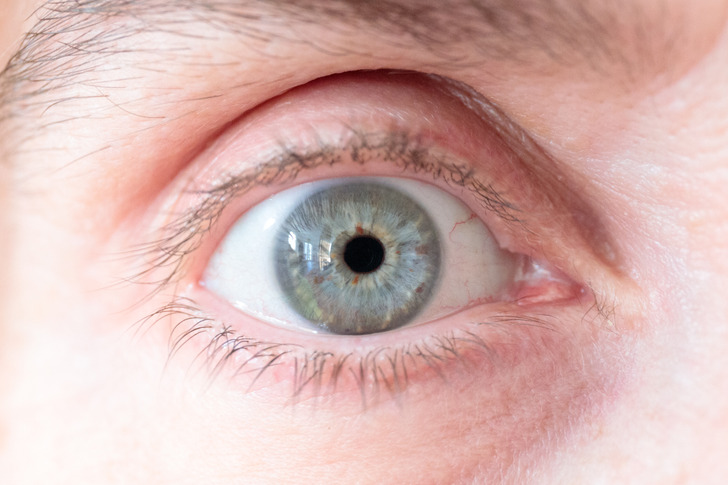The “gray” eyes look blue to me
Scientists Reveal the Eye Color That Has Replaced Green as the Rarest One in the World

We all know someone with stunning eyes, but what exactly makes certain eyes stand out more than others is their color? People with striking blue or green eyes tend to get more attention than those with brown, because these colors are rarer. But here’s the twist: scientists have just revealed that green is no longer the rarest eye color. There’s a new shade in town, and it’s even harder to find!
All eye colors are beautiful, but some of them are less rare.
Brown dominates the world, while blue and hazel come in second and third place. But when it comes to the rarest shades, green has had the top spot—until now.
Eye color isn’t just about luck; it’s all in the genes. Different pigments like melanin, eumelanin, and pheomelanin mix together to create the unique shades we see.
Some eye colors are noticed more, just because they’re not so widespread.
People with piercing blue or green eyes usually get more attention than those who have more widespread eye color. Brown eyes are considered the most common, but this color is somewhat underestimated, because it has a curious peculiarity.
Turns out, we all started with brown eyes—yep, every single one of us! According to Hans Eiberg, an associate professor in cellular and molecular medicine, a genetic mutation flipped a switch in our DNA, shutting down the ability to produce brown eyes. And just like that, lighter eye colors like blue were born.
Eye color all comes down to melanin—the same pigment that determines your skin and hair color. This genetic “switch” reduces the amount of melanin in the iris, essentially diluting deep brown eyes into lighter shades like blue, green, and hazel.
But here’s where it gets interesting: blue-eyed people have way less melanin than those with brown, green, or hazel eyes. And unlike brown-eyed folks, whose melanin-producing genes show a lot of variation, blue-eyed individuals are genetically pretty similar in this department.
Green eyes used to be considered the rarest, but they aren’t anymore.
Well, if you’ve been flexing your green eyes as the rarest out there, it might be time to rethink that claim.
Green has always been the unicorn of eye colors, with only about 2% of the world’s population rocking it. That rarity gave green-eyed folks some serious bragging rights.
But hold on—science just threw a curveball! There’s a new eye color that’s even harder to find, and it might just steal green’s crown as the rarest of them all.
The rarest eye color has been finally named.
Scientists now say gray is the rarest eye color! New research separates gray from blue as its own unique shade, making it even harder to find than green.
Gray eyes were previously classified as a subset of blue, but recent scientific reclassification now recognizes them as a separate eye color. This shift in classification has altered the hierarchy of eye color rarity, with gray now considered the rarest eye color.
Gray eyes contain just enough melanin in the front layer of the iris to slightly mute the blue wavelengths of light that are reflected back. The amount of melanin present also affects the shade—darker gray eyes have slightly more melanin in the front layer than lighter gray eyes.
Gray-eyed celebrities are having their triumph now.
Celebs like Ian Somerhalder, Meg Ryan, and others with rare gray eyes can now take a little extra pride in their unique look. With gray officially crowned as the rarest eye color, they’ve got a whole new level of exclusivity going on. Their stunning eye color just became even more special!
And if you have those rare gray eyes and want to make them stand out even more, there are some pieces of good advice from experts. Certain makeup tricks can really highlight them!
Try using eyeshadows in shades like blue, silver, or charcoal to make your gray eyes pop. A bold eyeliner and mascara can also help define your eyes, making them look even more striking and vivid. With the right makeup, gray eyes will have all the attention they deserve!
And here’s a very curious read about what your eye color can actually reveal about you and even your ancestry.
Comments
Related Reads
15 Moments That Show Kindness Is Our Greatest Power—Not Our Weakness

I Agreed to Adopt My SIL’s Baby — but Her Real Motive for Giving Him Up Broke My Heart

I Refused to Take My Ex Back, and My MIL Made Sure I’d Regret It

15 People Who Didn’t Want a Cat but Were Chosen by Fate Anyway

10 Real Stories With Twists So Dark, They Put Hollywood Movies to Shame

I Refused to Be Humiliated in Front of My Own Family

13 Stories That Prove Kindness Is the Quiet Superpower We All Share

I Said No to Bringing Kids to My Wedding—It’s My Day, Not a Kindergarten

I Refuse to Let My Husband Bring His Mom’s Cooking Into My House

15 Times Small Acts of Kindness Made a Giant Difference

13 People Share the Things They’ve Been Hiding From Their Partners for Years

I Refused to Have My MIL on Another Trip If She Won’t Babysit—Her Slapback Was Brutal






